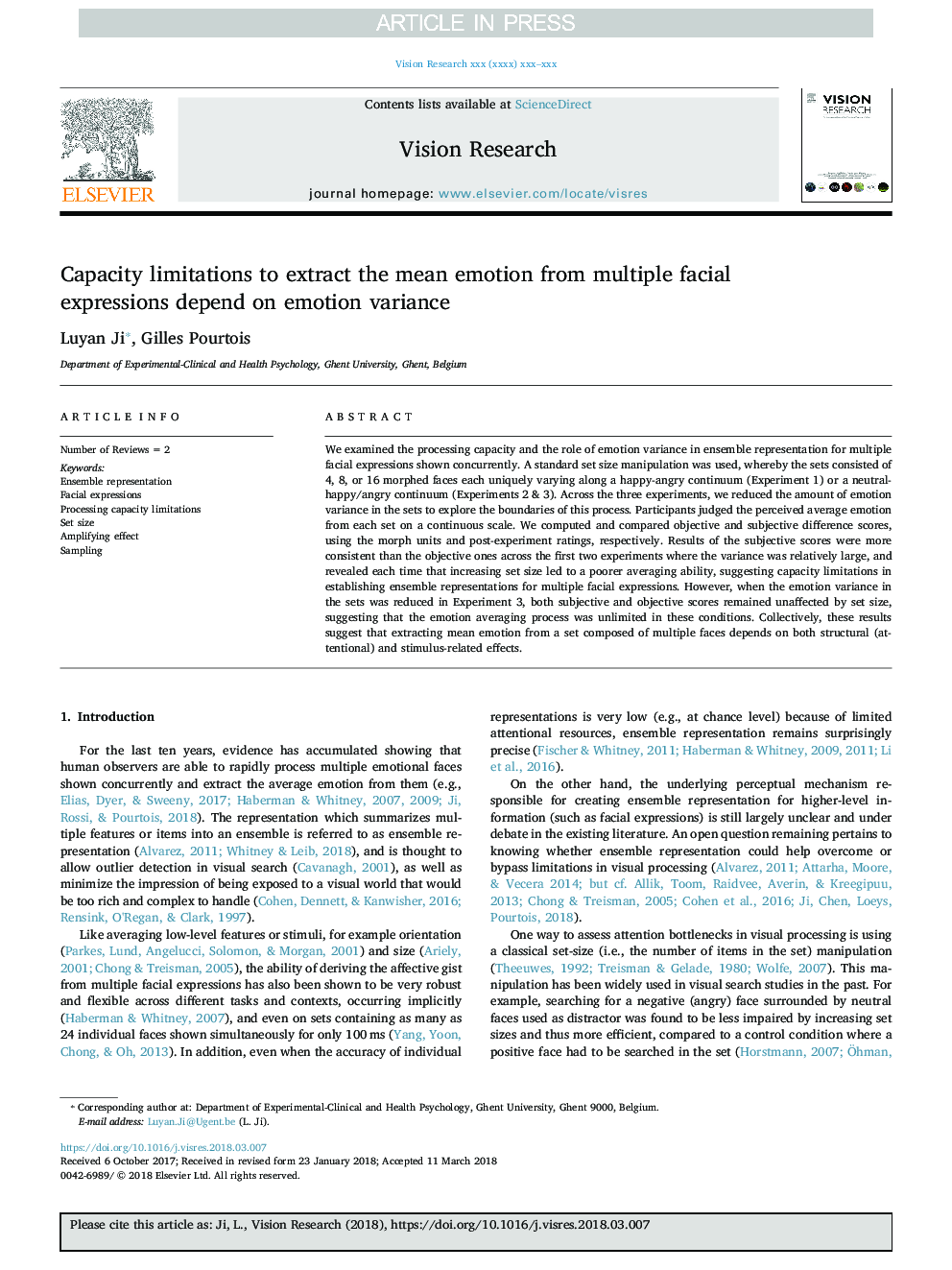| Article ID | Journal | Published Year | Pages | File Type |
|---|---|---|---|---|
| 8795311 | Vision Research | 2018 | 10 Pages |
Abstract
We examined the processing capacity and the role of emotion variance in ensemble representation for multiple facial expressions shown concurrently. A standard set size manipulation was used, whereby the sets consisted of 4, 8, or 16 morphed faces each uniquely varying along a happy-angry continuum (Experiment 1) or a neutral-happy/angry continuum (Experiments 2 & 3). Across the three experiments, we reduced the amount of emotion variance in the sets to explore the boundaries of this process. Participants judged the perceived average emotion from each set on a continuous scale. We computed and compared objective and subjective difference scores, using the morph units and post-experiment ratings, respectively. Results of the subjective scores were more consistent than the objective ones across the first two experiments where the variance was relatively large, and revealed each time that increasing set size led to a poorer averaging ability, suggesting capacity limitations in establishing ensemble representations for multiple facial expressions. However, when the emotion variance in the sets was reduced in Experiment 3, both subjective and objective scores remained unaffected by set size, suggesting that the emotion averaging process was unlimited in these conditions. Collectively, these results suggest that extracting mean emotion from a set composed of multiple faces depends on both structural (attentional) and stimulus-related effects.
Related Topics
Life Sciences
Neuroscience
Sensory Systems
Authors
Luyan Ji, Gilles Pourtois,
